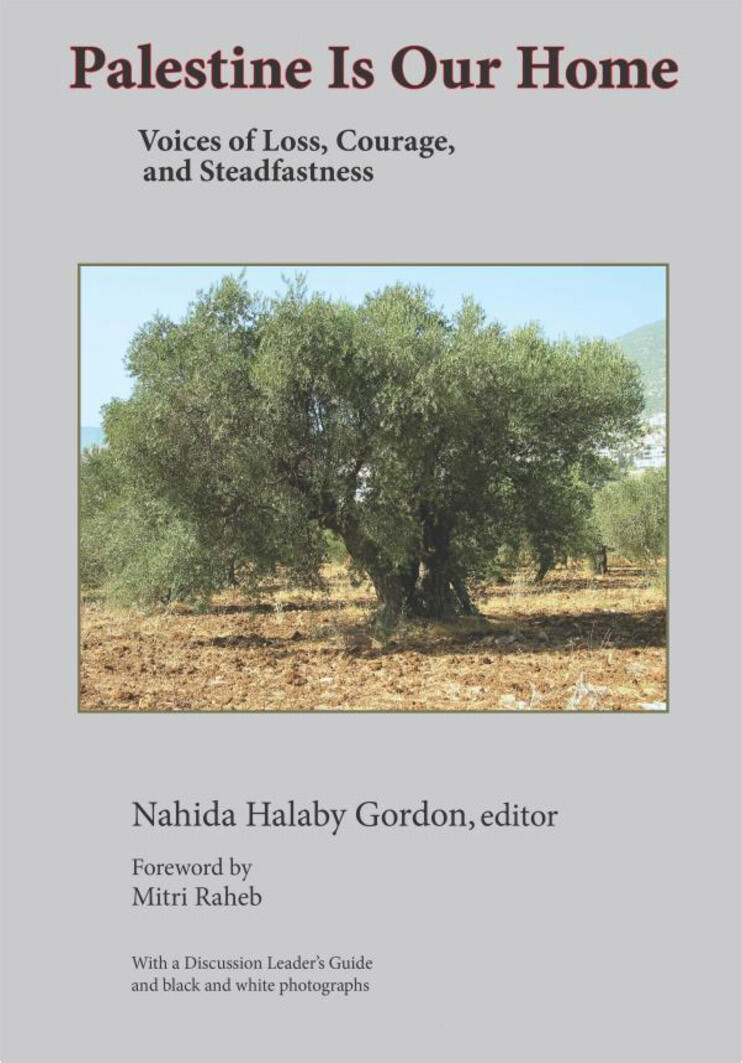The Electronic Intifada 17 May 2017

Palestine Is Our Home: Voices of Loss, Courage and Steadfastness, Nahida Halaby Gordon (editor), Palestine Books (2016)
“I am from there and I have memories,” the poet Mahmoud Darwish wrote of his native Palestine in his famous poem “I Am From There.”
And memories of “there” are at the heart of Palestine Is Our Home: Voices of Loss, Courage and Steadfastness, a valuable new collection of essays edited by Palestinian-American Nahida Halaby Gordon.
These essays contain numerous first-hand accounts of the Nakba, the forced expulsion of more than 750,000 Palestinians by Zionist paramilitaries in 1948.
A professor emerita at Case Western Reserve University in Cleveland, Ohio, Gordon was a member of the Middle East Study Committee of the Presbyterian Church USA. She brings that experience to this book by assembling study questions at the end of each account, making the book a most useful study guide for groups just beginning an inquiry into the Palestinian liberation struggle.
Palestine Is Our Home is divided into accounts of the Nakba as it was carried out in numerous districts of the British Mandate of Palestine. The reader becomes familiar with what people experienced in Akka, Ramle, Gaza, Jaffa, Jerusalem, Nablus, Ramallah and Tulkarm.
What happened makes for tough reading, owing to the numerous massacres – more than 70 according to Salman Abu Sitta in his book Atlas of Palestine, 1917-1966. The best known is the April 1948 massacre in the village of Deir Yassin outside Jerusalem, which Gordon recalls hearing about as a child living in Jaffa.
Radio for reunion
“I remember clearly the terror I felt,” she writes, “when hearing about it in the loudspeaker broadcasts in the streets. Vans of the newly arrived European colonists were traveling through our streets blasting the message: if you do not want the same thing to happen to you … then you should flee.”
One of the most frequently cited experiences in these accounts of the Nakba is the separation of families. Raouf J. Halaby, for example, recalls that it was commonplace for separated family members to use radio broadcasts to locate loved ones. Daily programs on radio stations in East Jerusalem, Amman and Damascus, for example, featured these messages once it became apparent that the newly declared state of Israel would not allow refugees to return.
Halaby remembers his mother’s message: “This message is for my brother Naim Halaby of Upper Bakaa in West Jerusalem. Your sister Katrina and her children are in Jericho and wish to go back home. Anyone hearing this message, please contact Naim Halaby and relay this urgent message.”
For Jacob J. Nammar of Jerusalem, it took three years before he was reunited with his brother and five years before his reunion with his father.
Other painful memories include the almost casual cruelty meted out by Zionist soldiers. The Reverend Audeh Rantisi describes his family’s expulsion from the town of al-Lydd in July 1948:
“Outside the gate, the soldiers stopped us and ordered everyone to throw all valuables onto a blanket. One young man and his wife of six weeks, friends of our family, stood near me. He refused to give up his money. Almost casually, the soldier pulled up his rifle and shot the man. He fell, bleeding and dying while his bride screamed and cried. I felt nauseated and sick, my whole body numbed by shock waves.”
The Nakba meant the loss of life, home and freedom. But as Gordon points out, the greatest loss was not that of “brick and mortars,” but rather “the loss of my Palestinian life and the loss of a sense of belonging in my own community.”
Ongoing catastrophe
Palestine Is Our Home makes clear that the Nakba is ongoing. The massacres did not end. They continued with the Kafr Qassim massacre of 1956, the Sabra and Shatila massacre of 1982 in Lebanon, and the Gaza massacres of 2008-09, 2012 and 2014 – all described in these pages.
As the collection’s subtitle implies, these narratives are not only about loss but also about courage and steadfastness. And to the book’s credit, the essays conclude with a revealing introduction to Palestinian art and artists and the role of Palestinian costumes and embroidery in keeping alive memory and identity.
An essay on the “Liberation Art of Palestine” by Samia A. Halaby shows the importance of cultural resistance and briefly describes the work of such artists as photographer Hanna Safieh, painters Ismail Shammout and Tamam al-Akhal, as well as Abdel Rahman al-Mozayen and Mustafa al-Hallaj, among several others.
The progressive Israeli organization Zochrot (Hebrew for remembrance) recently posted a video of Palestinian refugees from 1948 visiting their destroyed village of Beit Nabala. As the viewer watches three elderly women combing through the ruins of houses and buildings overgrown with grasses, the images conjure up the feelings of nostalgia and loss that people universally experience when they revisit a childhood home.
But for Palestinians, of course, there’s a particularity that few others know, a particularity that implies something larger than home. It must be what Darwish meant in the concluding lines of “I Am From There”:
I learned all the words and dismantled them,
To create a single word: Homeland…”
Rod Such is a former editor for World Book and Encarta encyclopedias. He lives in Portland, Oregon, and is active with the Occupation-Free Portland campaign.




